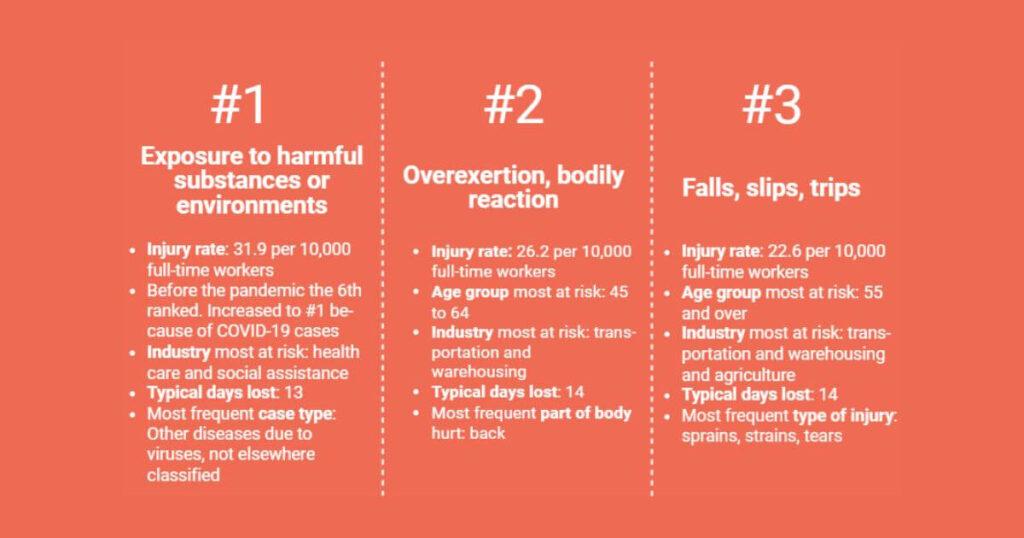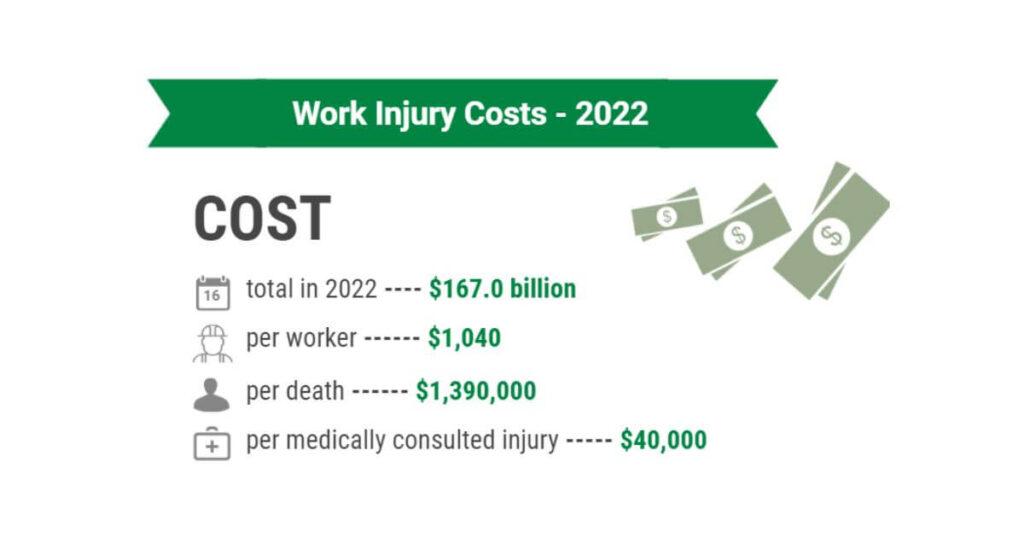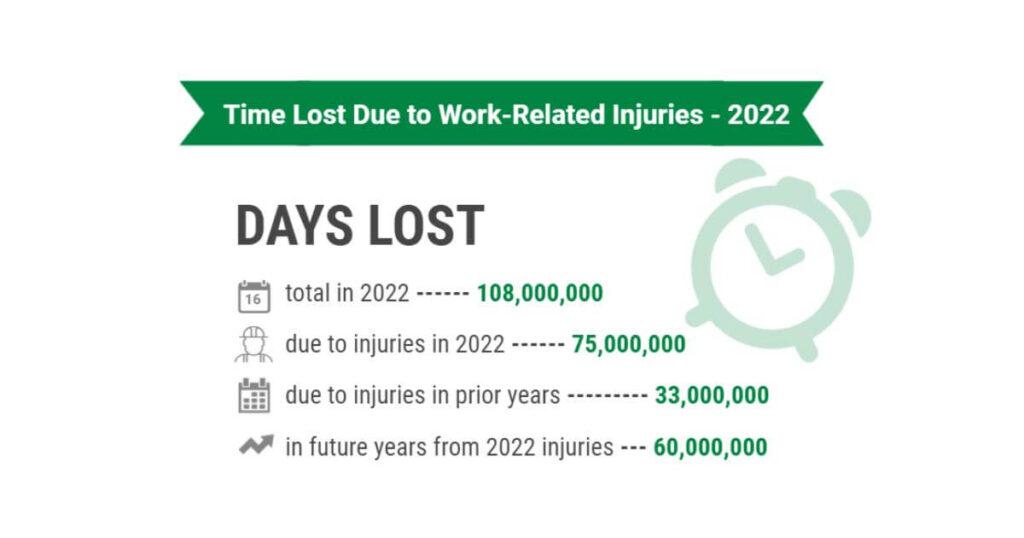Prioritizing Safety and Compliance
For any company, safety rules and regulations are the beacons that guide us.
The significance of workplace safety cannot be overstated, especially considering these annual US workplace statistics from the National Safety Council:
- 4,600 preventable deaths
- Over 4.5 million injuries
- More than $167 billion in associated costs
The biggest industry culprits? Construction, followed by transportation and warehousing — where the top three preventable injuries include:
- Exposure to harmful substances or environments
- Overexertion and bodily reaction
- Falls, slips, and trips

Ensuring your team is safe and compliant with OSHA regulations is not just about avoiding these statistics; it’s about enhancing productivity, conserving resources, and most importantly, protecting your employees.
Why A Safety-First Culture Is Important
Saves Money
Workplace accidents can lead to loss of workers and a decrease in production — directly affecting your bottom line.
According to the National Safety Council, the average cost of a worker injury is $40,000 per incident, per year. This costs each worker an additional $1,040 in production value just to offset the cost of work injuries.
When you factor in wage and productivity losses, medical expenses, administrative expenses, employer costs, and property damage, companies stand to lose a whopping $167 billion per year.

Saves Time
The NSC estimates that 75 million days are lost each year due to work-related injuries. That doesn’t even include time lost on the day the injury occurred, further medical treatment post-injury, or subsequent check-ups after an employee returns to work.
Nor does it factor in the additional time required to source, recruit, and train new employees to take their place.
All of a sudden, an hour-long safety training session doesn’t sound so bad, does it?

Boosts Employee Morale and Retention
A safety-first culture demonstrates to employees that their well-being is a top priority, boosting morale. This leads to increased job satisfaction and loyalty.
When employees feel safe and valued, they are more likely to stay with your company, reducing turnover rates and the associated costs of recruiting and training new hires.
Moreover, your commitment to safety encourages a positive work environment, fostering teamwork and productivity.

Ensuring Your Workforce is Safe and OSHA Compliant: Steps for Managers
Are you fully equipped to maintain workplace safety and compliance? Use this guide to assess and enhance your current safety practices.
1. Conduct Thorough Pre-Screening for Safety Skills
Begin your journey with a thorough safety skills assessment for every candidate. Confirm their proficiency in essential safety practices specific to your industry.
This ensures that the talent you bring on board is well-versed in necessary safety protocols, setting a solid foundation for a safe work environment.
2. Provide Customized Safety Guidance
Equip your new hires with tailored safety guidance before they start. This includes comprehensive education on the latest safety protocols and guidelines relevant to their roles.
By doing this, you ensure each team member is prepared and knowledgeable, fostering a culture of safety from the outset.
3. Collaborate on Safety Initiatives
Obtain a collective commitment from leaders and employees to prioritize safety above all competing goals.
Forge strong partnerships with safety consultants or experts to ensure your organization prioritizes a culture of safety.
Regular collaboration and open communication are key to maintaining a safe and healthy work environment, reinforcing a safety-first mindset throughout your organization.
4. Conduct Regular Safety Audits and Site Visits
Schedule and conduct regular safety audits and site visits to uphold a secure working environment. Use these visits to check in with employees, assess their satisfaction, address any concerns, and communicate any process changes.
This proactive approach not only maintains safety standards but also strengthens trust and teamwork among your employees.
5. Be Prepared for Incident Response
Equip your risk mitigation team to handle any workplace incidents efficiently. Prompt and effective incident response minimizes risks and preserves the integrity of your safety protocols, ensuring the continued protection of your workforce.
6. Offer Ongoing Safety Support and Education
Safety is an ongoing journey. Provide your team with continuous support, education, and updates on the latest safety regulations and practices.
Regular training sessions and safety workshops keep them informed and vigilant, reinforcing your commitment to their well-being.
7. Don’t Be Afraid To Ask For Additional Help
If you need assistance meeting or maintaining these standards, consider partnering with a staffing agency that can act as a safety advocate.
Look for agencies that are members of the National Safety Council (NSC). These companies stay up-to-date on state law and OSHA regulations to ensure the health, safety, and well-being of every team member.
Safeguard Your Team with Comprehensive Safety Services
The costs of improper safety procedures are not worth the financial or emotional risk. For managers, the peace of mind that comes from knowing your employees are safe on the job is priceless.
By implementing these steps, you can ensure your workforce remains safe and OSHA compliant — allowing you and your team to return home and rest easy at the end of each day.
Want More Workforce Management Insights?
For more valuable resources on hiring and building a strong workforce, check out our Employer Insights.



